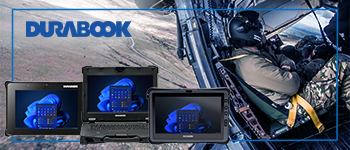Protection from the skies
Drone Guard reveals what can be done to keep our skies safe as the number of drones is expected to reach 100-million by 2020
Since their appearance in the late 2000s multi-rotor drones have taken the world by surprise. Unlike unmanned aerial systems (UAS) pursued by the world’s military forces under military research, development and supply channels, these drones – originally for recreational use by hobbyists and filmmakers – utilised highly integrated, miniaturised, cutting-edge electronics designed for consumer communications systems that pack ultra-advanced capabilities including remotely controlled and autonomous systems that perform remote surveillance, precision navigation, secure communications and agile, jam-resistant communications.
Drone uses have expanded dramatically in recent years, by 2020 more than 100-million drones are expected to roam our skies, used in civilian, commercial and scientific roles. They carry remote monitoring, metering, sensing and security missions, infrastructure surveillance and agricultural services, fishery, forestry monitoring and control, delivering parcels and medical supplies, carry video cameras to cover sports events and more. Using open-source navigation and flight controls, amateurs and experts can hack drones to carry out missions that they were never originally designed to do.
As they become more common in our daily life, drones can also become potential menaces when used by criminals and terrorists. So far, lethal use of drones has been limited to the combat zones in Iraq, Syria and Afghanistan, but security forces around the world are certain that future drones’ lethal use will not be limited to warzones. In fact, the uninterrupted accessibility of drones could turn critical infrastructures such as gas and oil tanks or chemical facilities into mega-explosives if exploited by terrorist using drones.
As small, slow and low-flying vehicles, multi-rotor drones are rarely spotted from the ground by radar, camera or the human eye and, when strapped with rudimentary weapons, their simple yet effective control enables operators to use them as loitering weapons. In Iraq they were frequently used by ISIS to spread havoc among Iraqi forces, defeated only with dedicated Counter-UAS (C-UAS) equipment that was rushed to the combat zone.
One of these C-UAS weapons is the Israeli Drone Guard, an integrated system that relies on multiple sensors to detect, classify, identify and defeat drone targets. Developed by IAI Elta Systems, Drone Guard employs a multi-layered approach for detection, classification and targeting. For detection, the company’s ELM-2026B X-band radar and passive Communications Intelligence (COMINT) can be used to detect and classify targets from five kilometres. Electro-optical sensors may also be used to detect targets that maintain minimal or no radar signature. Once a drone presence is verified, the radar directs the Electro-Optical (EO) system to identify it – the combination of radar and SIGINT is part of Elta’s multi-layered detection capability that maximises the system’s efficiency.
Once detected and identified, targets are mitigated by Drone Guard using multi-layered effects. The most basic effectors are electronic emitters used to jam and disrupt the drone’s control and navigation channels, following different protocol that can ‘fend off’ the drone from the guarded premises or bring it down safely using cyber ‘takeover’ methods. Elta’s effector portfolio also includes other effectors such as electronic warfare (EW) and ‘HARD KILL’ measures, to deal with specific environments and defeat existing and evolving threats.
Drone Guard’s agility and adaptability positions it apart from numerous C-UAS systems available in the market. Relying on effective, advanced, software defined radar and sensors, the system provides the range and accuracy necessary for quick reaction, tracking and pointing of EO sensors, while the integral COMINT package automatically classifies targets to reduce false alarms. Software-defined jammers enable users to tailor jamming against a specific target (or swarms) and to employ ‘takeover’ protocols that adapt to evolving threats and scenarios. All these systems are controlled through a common interface that integrates all functions to simplify the operator’s mission.
Drone Guard is tailored to address a wide range of applications, from relatively simple deployments to the most complex. The system is designed to counter present and evolving threats and endure the most challenging operating environments. Offering a sophisticated and agile C-UAS capability, Drone Guard is well positioned to secure civilians and military forces against the increasingly growing menace of drones.









